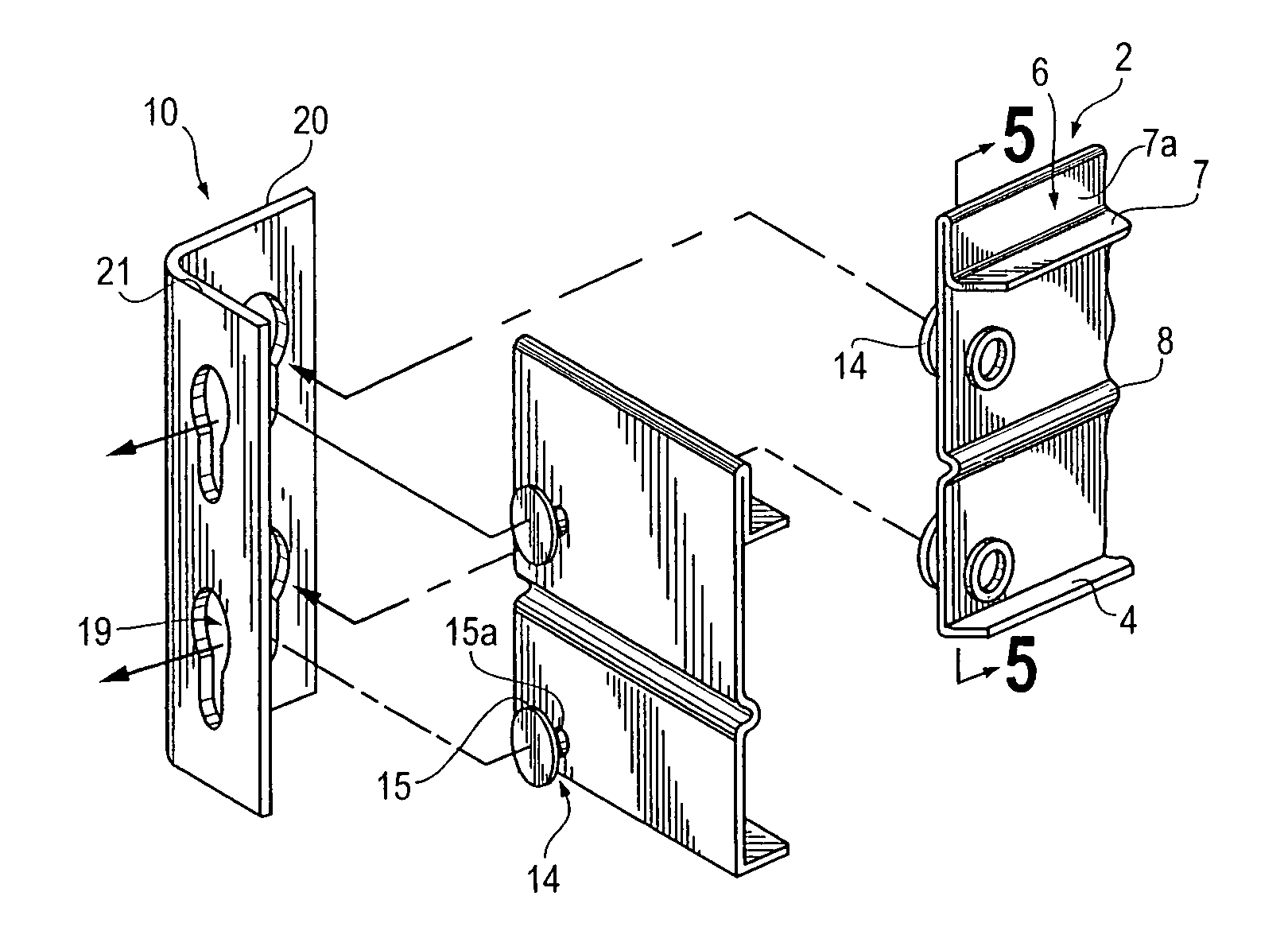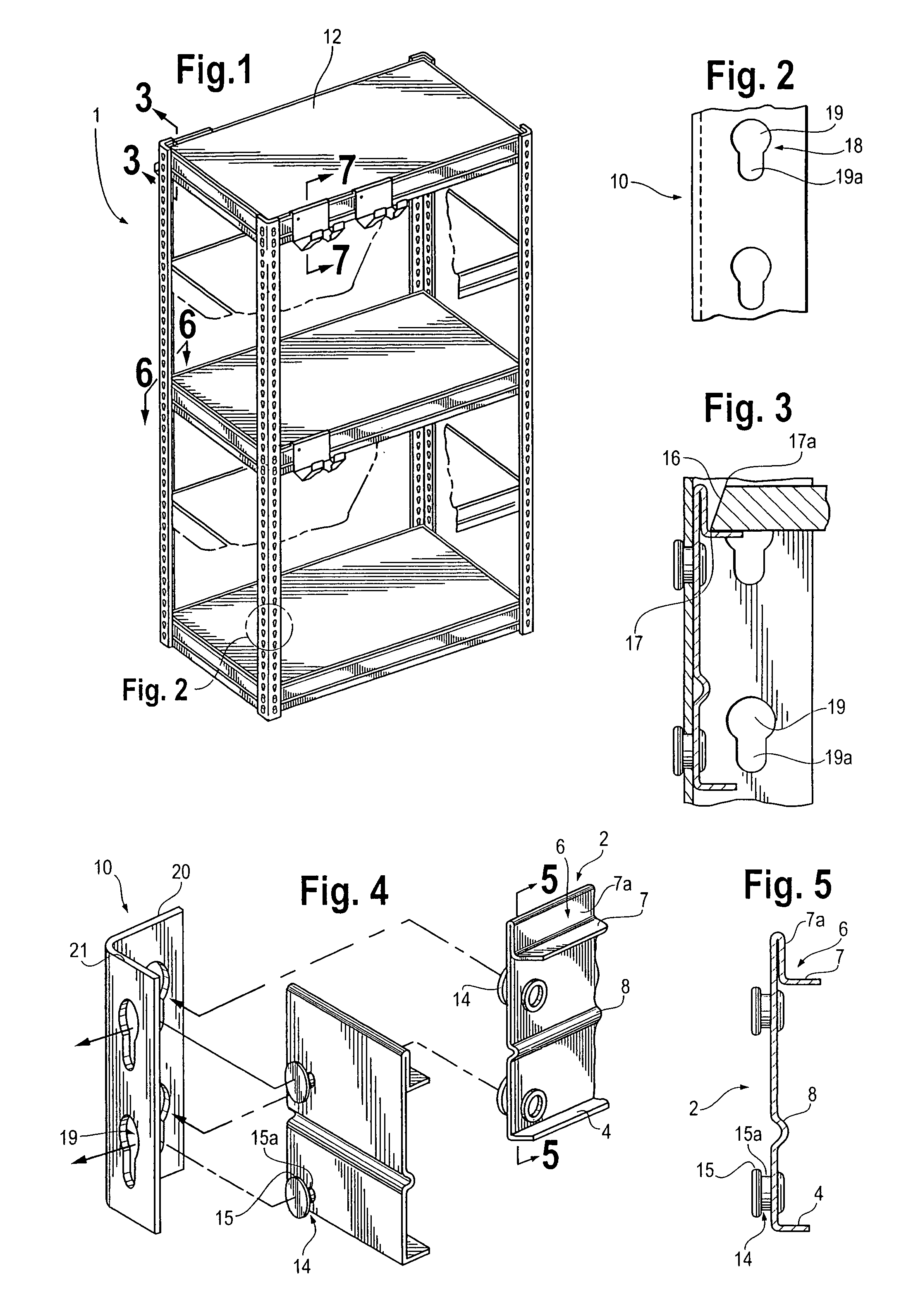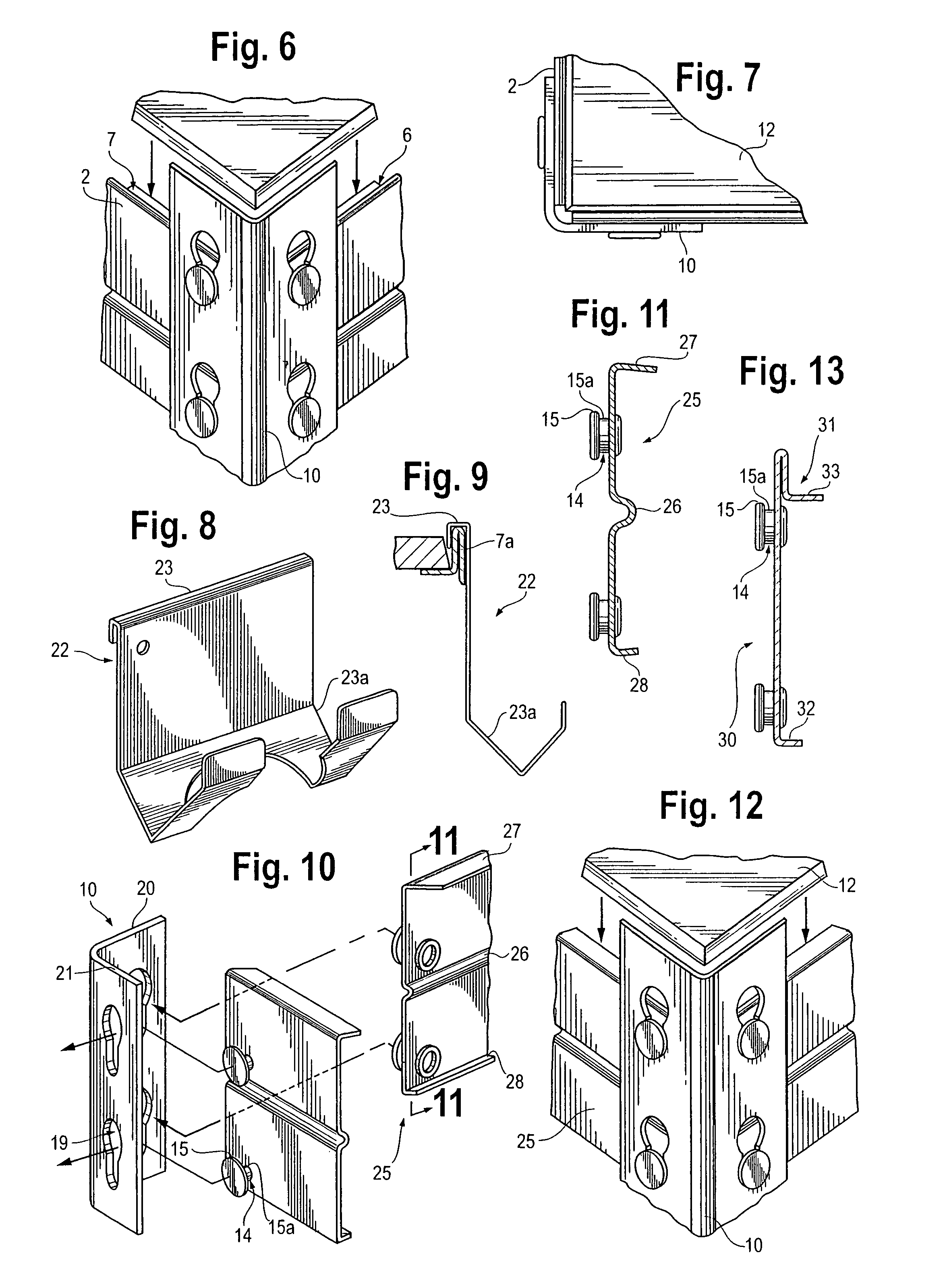Cargo rack
a storage rack and rack technology, applied in the field of shelving units, can solve the problems of large storage rack and structural beam of this patent, poor material utilization, and insufficient load bearing capacity of horizontal support members, and achieve the effects of maximizing strength to material weight ratio, easy assembly, and reducing cost per uni
- Summary
- Abstract
- Description
- Claims
- Application Information
AI Technical Summary
Benefits of technology
Problems solved by technology
Method used
Image
Examples
Embodiment Construction
[0026]Referring to FIG. 1, the assembled shelving unit 1 is shown including four vertical posts 10. Each vertical post 10 has a pair of legs 20, 21 perpendicular to one another as shown in FIG. 4. A plurality of structural beams 2, 25, or 30 and horizontal shelving members 12 extend between the pairs of legs 20, 21 on vertical posts 10 and are attached in a manner to be described below.
[0027]The recessed structural beams 2 include a rib 8, with a recessed flange 6, and a return flange 4 as seen in FIG. 5. The rib 8, recessed flange 6, and return flange 4 terminate in a vertical edge of the recessed structural beam 2. The recessed flange 6 is chamfered at the ends of its base 7 in order to enable assembly to appear as seen in FIG. 4 once it has moved along the dashed lines to engage the legs 20, 21 of the vertical post 10.
[0028]The recessed structural beam 2 is preferably and approximately 2.5 inches in height. The recessed flange 6 is preferably and approximately 0.56 inches in heig...
PUM
 Login to View More
Login to View More Abstract
Description
Claims
Application Information
 Login to View More
Login to View More - R&D
- Intellectual Property
- Life Sciences
- Materials
- Tech Scout
- Unparalleled Data Quality
- Higher Quality Content
- 60% Fewer Hallucinations
Browse by: Latest US Patents, China's latest patents, Technical Efficacy Thesaurus, Application Domain, Technology Topic, Popular Technical Reports.
© 2025 PatSnap. All rights reserved.Legal|Privacy policy|Modern Slavery Act Transparency Statement|Sitemap|About US| Contact US: help@patsnap.com



